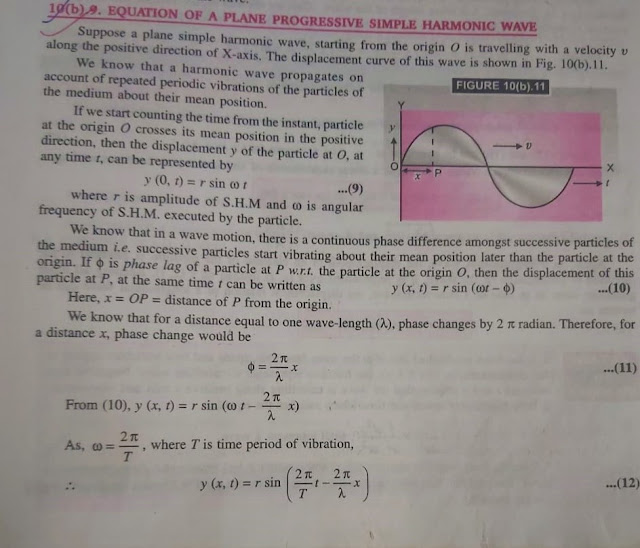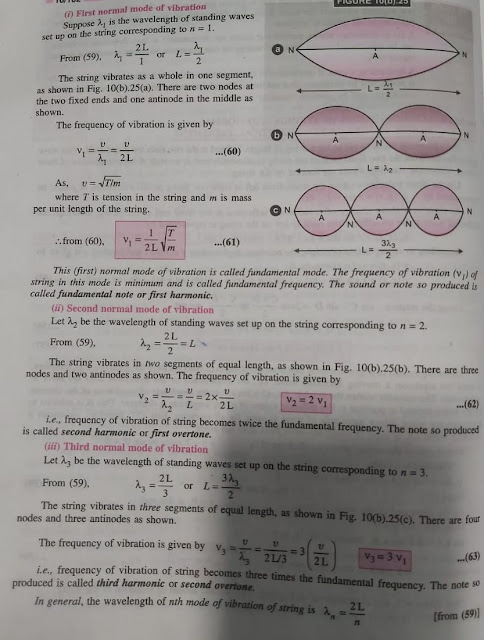Chapter 15
Waves
Waves
Wave is a form of disturbance which travels through a material medium due to the repeated periodic motion of the particles of the medium about their mean positions without any actual
transportation of matter.
Characteristics of wave
The characteristics of waves are as follows:
(i) The particles of the medium traversed by a wave execute relatively small vibrations about their mean positions but the particles are not permanently displaced in the direction of propagation of the wave.
(ii) Each successive particle of the medium executes a motion quite similar to its predecessors along/perpendicular to the line of travel of the wave.
(iii) During wave motion only transfer of energy takes place but not that of a portion of the medium.
Waves are mainly of three types:
(a) mechanical or elastic waves,
(b) electromagnetic waves and
(c) matter waves.
Mechanical waves
Mechanical waves can be produced or propagated only in a material medium. These waves are governed by Newton’s laws of motion. For example, waves on water surface, waves on strings, sound waves etc.
Electromagnetic Waves
These are the waves which require no material medium for their production and propagation, i.e., they can pass through vacuum and any other material medium. Common examples of electromagnetic
waves are visible light; ultra-violet light; radio waves, microwaves etc.
Matter waves
These waves are associated with moving particles of matter, like electrons, protons, neutrons etc. Mechanical waves are of two types:
(i) Transverse wave motion, (ii) Longitudinal wave motion,
Transverse wave motion
In transverse waves the particles of the medium vibrate at right angles to the direction in which the wave propagates. Waves on strings, surface water waves and electromagnetic waves are transverse waves. In electromagnetic waves (which include light waves) the disturbance that travels is not a result of vibrations of particles but it is the oscillation of electric and magnetic fields which takes place at right angles to the direction in which the wave travels.
Longitudinal wave motion
In these types of waves, particles of the medium vibrate to and fro about their mean position along the direction of propagation of energy. These are also called pressure waves. Sound waves are longitudinal mechanical waves.
Wavelength
The distance travelled by the disturbance during the time of one vibration by a medium particle is called the wavelength (λ). In case of a transverse wave the wavelength may also be defined as the distance between two successive crests or troughs. In case of a longitudinal wave, the wavelength (λ) is equal to distance from centre of one compression (or refraction) to another.
Wave Velocity
Wave velocity is the time rate of propagation of wave motion in the given medium. It is different from particle velocity. Wave velocity depends upon the nature of medium.
Wave velocity (υ) = frequency (v) x wavelength (λ)
Amplitude
The amplitude of a wave is the maximum displacement of the particles of the medium from their mean position.
Frequency
The number of vibrations made by a particle in one second is called Frequency. It is represented by v. Its unit is hertz (Hz) v =1/T
Time Period
The time taken by a particle to complete one vibration is called time period.
T = 1/v, it is expressed in seconds.




















No comments:
Post a Comment